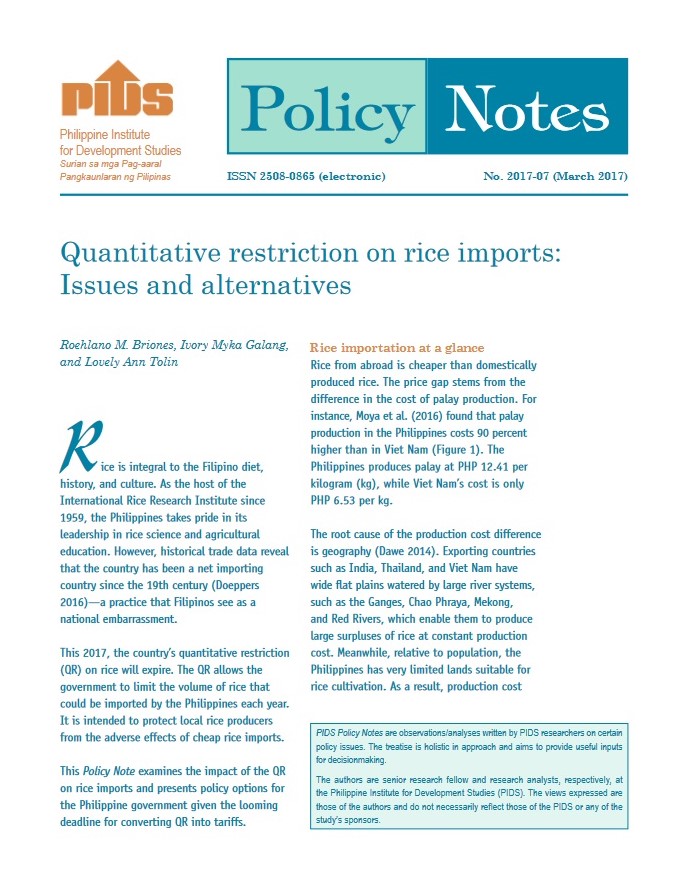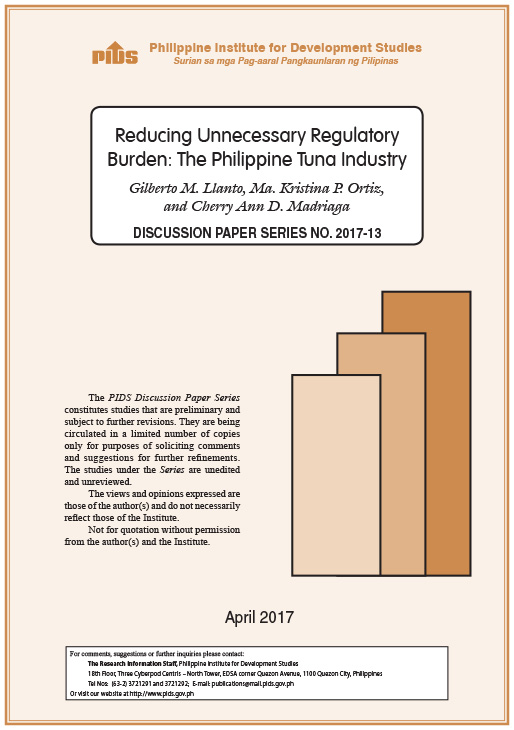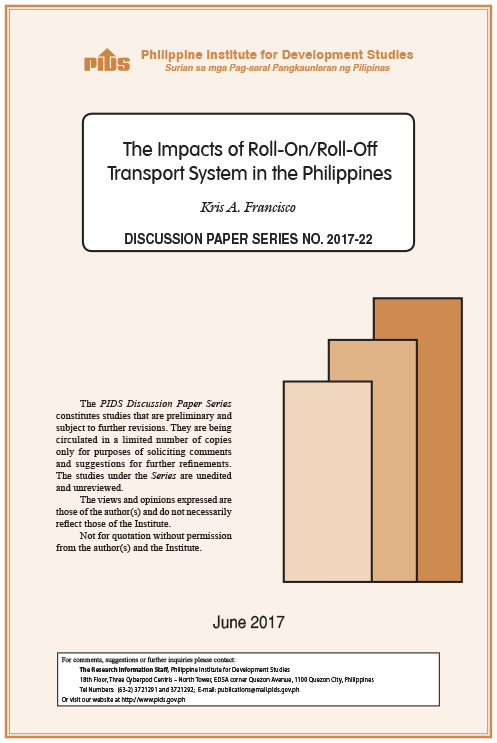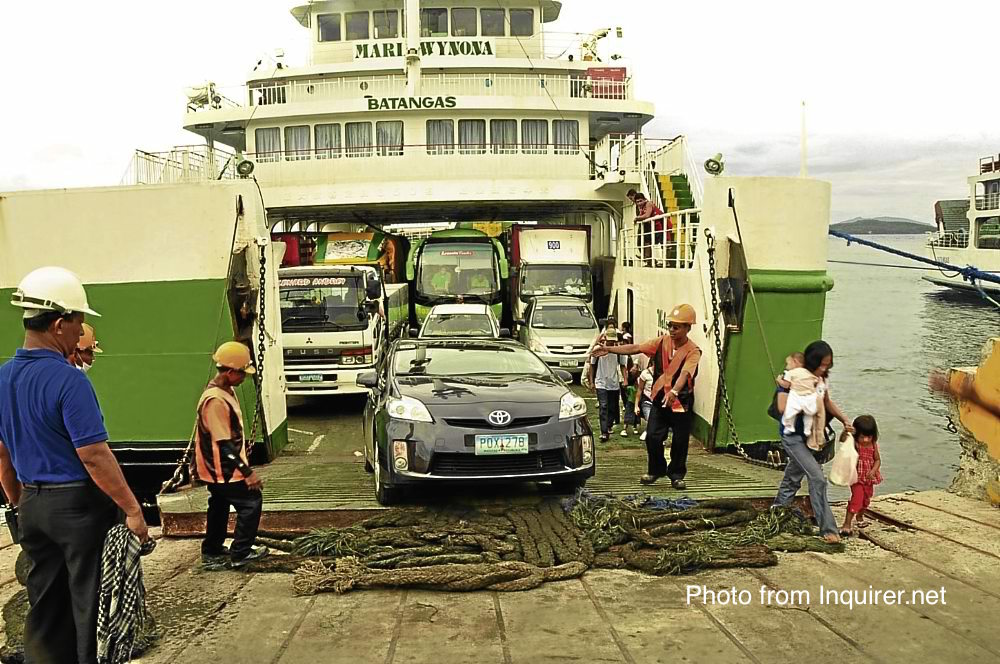THE Roll-on, Roll-off (Ro-Ro) transport system being implemented to promote interisland connectivity was found to have increased the income of agricultural households near ports nationwide, a study conducted by state think tank Philippine Institute for Development Studies (PIDS) showed.
The study, “The Impacts of Roll-On/Roll-Off Transport System in the Philippines” conducted by former PIDS Research Analyst Kris Francisco, said the Ro-Ro program of the government has increased “household income by about 7% in municipalities near the Ro-Ro ports” due to the “reduced cost of inter-island shipping and travel time.
In the short-run, we immediately noticed the increase in income of agricultural households. Using our estimates, we have exhibited how the Ro-Ro port operation stimulated both agriculture and non-agriculture related activities,” the conclusion of the study read.
Improving the transport system within a country provides short-run and long-run effects. With our results, we have shown that the government’s efforts in improving the mobility of goods and services as well as the population within the economy have resulted to welfare-improving opportunities especially to households living near the Ro-Ro ports,” it added.
Citing a previous study conducted by the Asian Development Bank, the study said the Ro-Ro policy was “able to cut the travel time between Mindanao and Luzon by 12 hours” and has lowered the “cost of freight and passenger transport by about 30% and 40%, respectively.
It has also expanded the scope of regional markets by introducing new interisland connections.
The Ro-Ro program was first initiated by former President and now Pampanga 2nd district Rep. Gloria Macapagal-Arroyo, part of a national transport plan which seeks to use nautical highways for seamless interisland movement of goods through Luzon, Visayas and Mindanao.
The system allows vehicles to directly board ships and vessels without unloading their cargo and then dock in the port of destination with the shipments still inside the vehicles.
The study noted that non-agriculture opportunities also “flourished” on the island where the Ro-Ro port is located. Agricultural productivity on nearby islands was also enhanced, it added.
Aside from improving household income, the PIDS study also showed that the Ro-Ro policy “was able to generate a relatively long-term impact” as opportunities gained by households from the Ro-Ro port operation were extended to their children “in the form of human capital investment.”
“About 83,2017 males and 74,637 females were able to study because of the Ro-Ro port operations,” it said, adding that the increase in the financial capacity of households, especially those living near Ro-Ro ports, have enabled them to send their children to school.
The study noted that the Ro-Ro policy was able to integrate roads with water transportation by allowing vehicles to directly board the ship without unloading their cargoes and be easily transferred from one island to another, through the Ro-Ro ferry terminal system (RRTS). “The Ro-Ro policy was the government’s attempt to expand the country’s transport system with minimal investment. Instead of investing in new port infrastructure, [it] allowed the conversion of existing ports into Ro-Ro ports and encouraged private sector participation,” the analyst said in the study.
The RRTS is a network of Ro-Ro ferry terminals that link the country together through Ro-Ro ships. It is composed of three nautical highways -- the Western, Central, and Eastern Nautical Highways, which started operating in 2003, 2008, and 2009, respectively. It also serves as an alternative option to the Load-on/Load-off (Lo-Lo) system that was the dominant mode of shipping before 2003.
Compared to Ro-Ro however, Lo-Lo was too costly for small-scale shippers as its containerized method usually involves layers of fees for cargo handling and wharfage. The ultimate objective of the Ro-Ro program is to establish seamless interisland connectivity which aims to enhance trade and tourism.
“In general, our study highlights the central role of the transport system in an archipelagic country like the Philippines. It strengthens the argument that rural growth can be enhanced by providing urban-rural linkages through an efficient and affordable transport network,” the study said.
Nonetheless, the PIDS report noted that despite the positive effects of the Ro-Ro operations, the impact of the policy on all sectors “may not necessarily be uniformly positive.” The Philippine Ports Authority earlier this year announced it is looking to rehabilitate and develop more ports next year in a bid to further push interisland connectivity via Ro-Ro ferry services.
Recently, the government also announced Ro-Ro ferry service using the Davao City-General Santos-Bitung, Indonesia route which will provide a faster and cheaper channel of trading goods among key cities of the Brunei Darussalam-Indonesia-Malaysia-Philippines East ASEAN Growth Area (BIMP-EAGA) initiative.
The study, “The Impacts of Roll-On/Roll-Off Transport System in the Philippines” conducted by former PIDS Research Analyst Kris Francisco, said the Ro-Ro program of the government has increased “household income by about 7% in municipalities near the Ro-Ro ports” due to the “reduced cost of inter-island shipping and travel time.
In the short-run, we immediately noticed the increase in income of agricultural households. Using our estimates, we have exhibited how the Ro-Ro port operation stimulated both agriculture and non-agriculture related activities,” the conclusion of the study read.
Improving the transport system within a country provides short-run and long-run effects. With our results, we have shown that the government’s efforts in improving the mobility of goods and services as well as the population within the economy have resulted to welfare-improving opportunities especially to households living near the Ro-Ro ports,” it added.
Citing a previous study conducted by the Asian Development Bank, the study said the Ro-Ro policy was “able to cut the travel time between Mindanao and Luzon by 12 hours” and has lowered the “cost of freight and passenger transport by about 30% and 40%, respectively.
It has also expanded the scope of regional markets by introducing new interisland connections.
The Ro-Ro program was first initiated by former President and now Pampanga 2nd district Rep. Gloria Macapagal-Arroyo, part of a national transport plan which seeks to use nautical highways for seamless interisland movement of goods through Luzon, Visayas and Mindanao.
The system allows vehicles to directly board ships and vessels without unloading their cargo and then dock in the port of destination with the shipments still inside the vehicles.
The study noted that non-agriculture opportunities also “flourished” on the island where the Ro-Ro port is located. Agricultural productivity on nearby islands was also enhanced, it added.
Aside from improving household income, the PIDS study also showed that the Ro-Ro policy “was able to generate a relatively long-term impact” as opportunities gained by households from the Ro-Ro port operation were extended to their children “in the form of human capital investment.”
“About 83,2017 males and 74,637 females were able to study because of the Ro-Ro port operations,” it said, adding that the increase in the financial capacity of households, especially those living near Ro-Ro ports, have enabled them to send their children to school.
The study noted that the Ro-Ro policy was able to integrate roads with water transportation by allowing vehicles to directly board the ship without unloading their cargoes and be easily transferred from one island to another, through the Ro-Ro ferry terminal system (RRTS). “The Ro-Ro policy was the government’s attempt to expand the country’s transport system with minimal investment. Instead of investing in new port infrastructure, [it] allowed the conversion of existing ports into Ro-Ro ports and encouraged private sector participation,” the analyst said in the study.
The RRTS is a network of Ro-Ro ferry terminals that link the country together through Ro-Ro ships. It is composed of three nautical highways -- the Western, Central, and Eastern Nautical Highways, which started operating in 2003, 2008, and 2009, respectively. It also serves as an alternative option to the Load-on/Load-off (Lo-Lo) system that was the dominant mode of shipping before 2003.
Compared to Ro-Ro however, Lo-Lo was too costly for small-scale shippers as its containerized method usually involves layers of fees for cargo handling and wharfage. The ultimate objective of the Ro-Ro program is to establish seamless interisland connectivity which aims to enhance trade and tourism.
“In general, our study highlights the central role of the transport system in an archipelagic country like the Philippines. It strengthens the argument that rural growth can be enhanced by providing urban-rural linkages through an efficient and affordable transport network,” the study said.
Nonetheless, the PIDS report noted that despite the positive effects of the Ro-Ro operations, the impact of the policy on all sectors “may not necessarily be uniformly positive.” The Philippine Ports Authority earlier this year announced it is looking to rehabilitate and develop more ports next year in a bid to further push interisland connectivity via Ro-Ro ferry services.
Recently, the government also announced Ro-Ro ferry service using the Davao City-General Santos-Bitung, Indonesia route which will provide a faster and cheaper channel of trading goods among key cities of the Brunei Darussalam-Indonesia-Malaysia-Philippines East ASEAN Growth Area (BIMP-EAGA) initiative.












